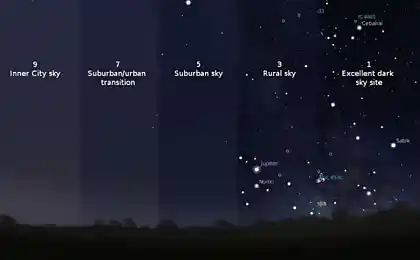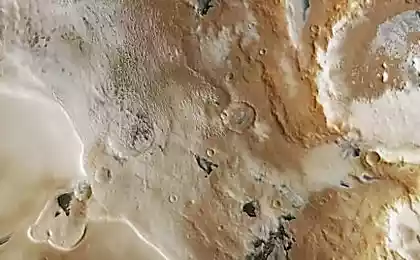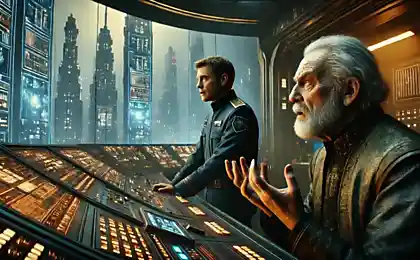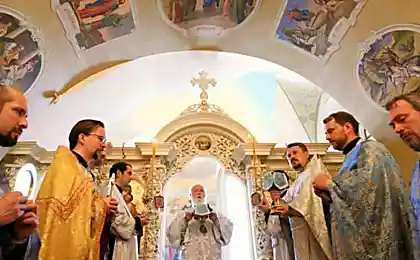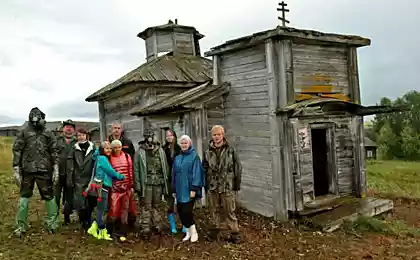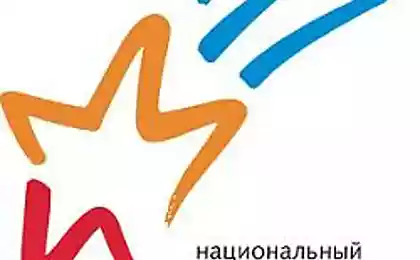904
And after work - in the sky
Weather today evening was good - clear and calm. Before sunset a couple of hours. Why not go flying?
I do not own an airplane parked somewhere at the airport a few hours away from home. No estates with a helipad. No pilot's license and a certificate from VLEK. I'm just a programmer, the day I write the code in the Moscow office, and the evening meal on the train back home in Moscow.
But I know the secret of flight at any time when the same desire, free time and the weather - even after work. And since my childhood I dreamed of the sky. When I discovered this technique, I went and told everyone talking. Alas, the most important discovery was the fact that the vast majority of my interlocutors not to do not know how or fear, but simply does not want to fly ...
So we take out of the house of our aircraft, cargo and leave the field a mile from my house. The place is very loved flying brothers and close to them in the spirit of model airplanes, but today there is no one but us. That's how it all fits in the trunk. In the photo the great American minivan, but in all it is an ordinary sedan will go.
28 photos

All we need for the flight (except the pilot) - paramotor (correctly "backpack paramotor installation"), the wing (paraglider) and helmet. The bag hides Right guard screws and screw itself.
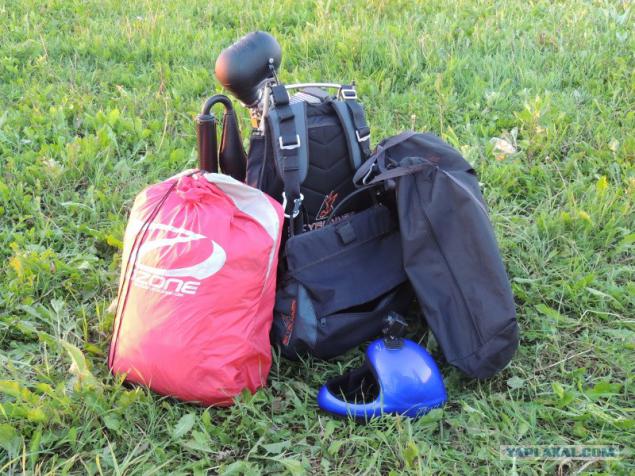
Putting the fence. Its main purpose - to give soft slings to slip past a rotating propeller at the start. In addition, the fence protects the screw from contact with parts of the paramotor, the pilot's limbs and elements of the landscape.

The enclosure consists of four parts, Tie the "Velcro» Velcro. At first glance this does not seem reliable fixation, but this loop fastener is used even in space.
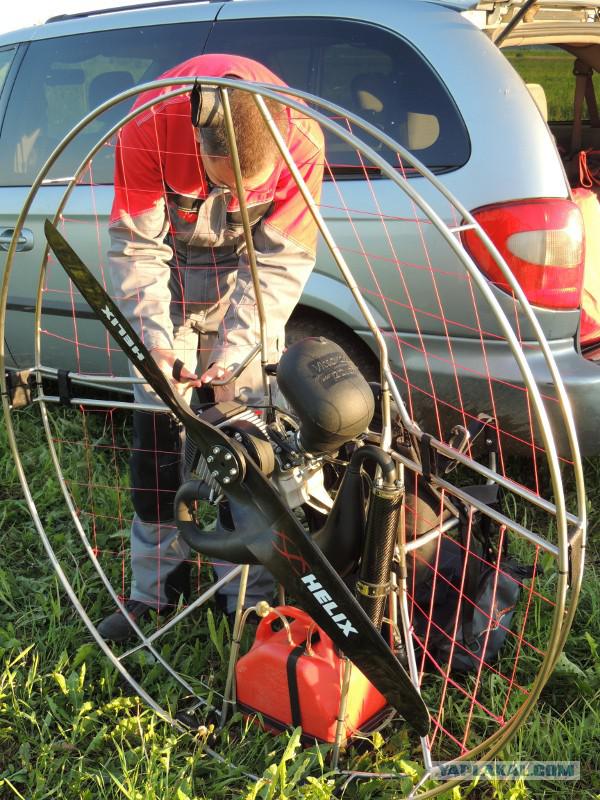
Tighten the six Allen key bolts of the propeller. This screw is made of carbon fiber and costs 250 euros. Wood screws are half the price, but even the damaged grass and snow. Carbon propeller is much stronger.
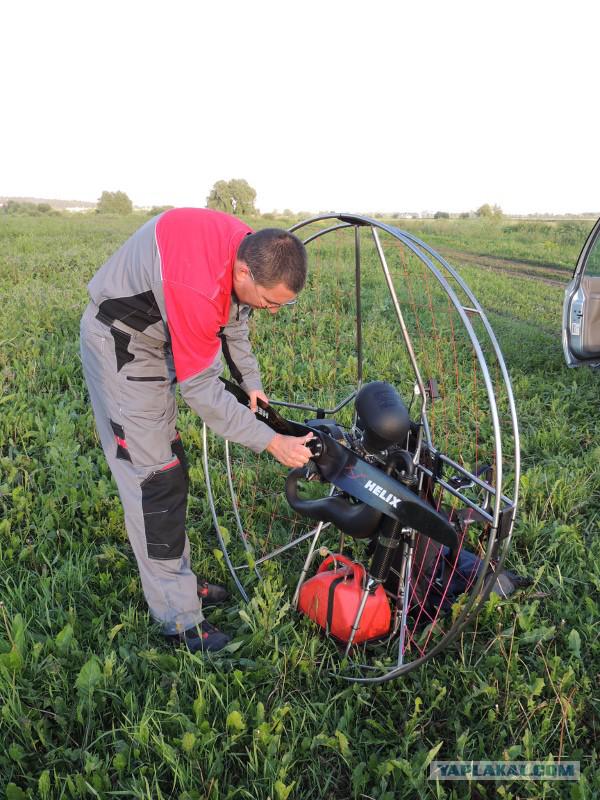
The process of mixing and dispensing of fuel (gasoline A-95 and 3%, not cheap two-stroke synthetic oil Motul-710) we do not see, because the tank was filled in again ask the eyeballs. Defined fuel "pear", we start the engine for the "dergalku." There paramotory with electric starter, but for the sake of luxury to be got by pressing their owners have to carry on his back a starter, the battery and the generator, and to deal with their failures. There is also an example of the extreme minimalism - start scrolling screw hand.

Warming up the engine on an average gas. Full throttle can be given, since it is impossible to keep the engine - I slide back across the grass. The manufacturer claims that the maximum thrust - 75 kilograms.
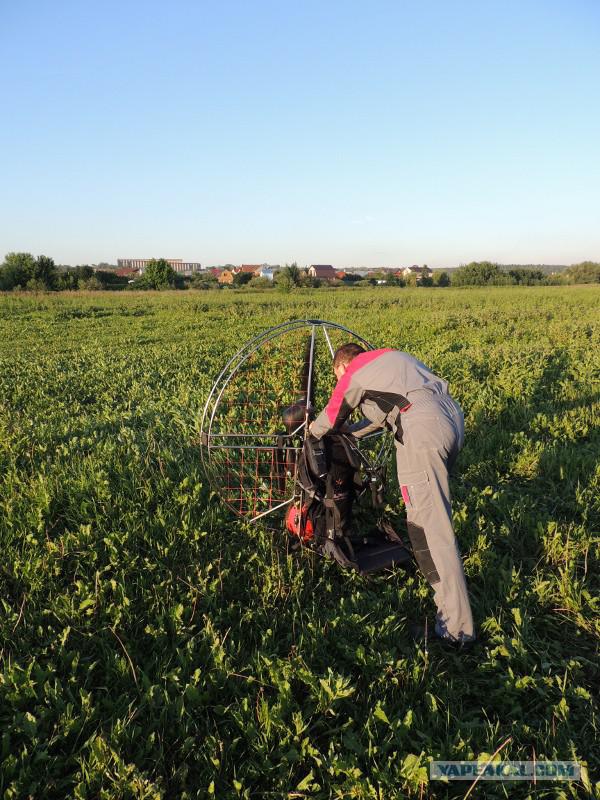
We suppress the engine and the wing stretches. Paragliding my French Ozone Buzz Z3, 32 square meters, the take-off weight of 100 to 135 kilograms for the free (non-motorized) flights. He did not specifically designed for powered flight, but nevertheless I do not want to start a separate wing for the motor.
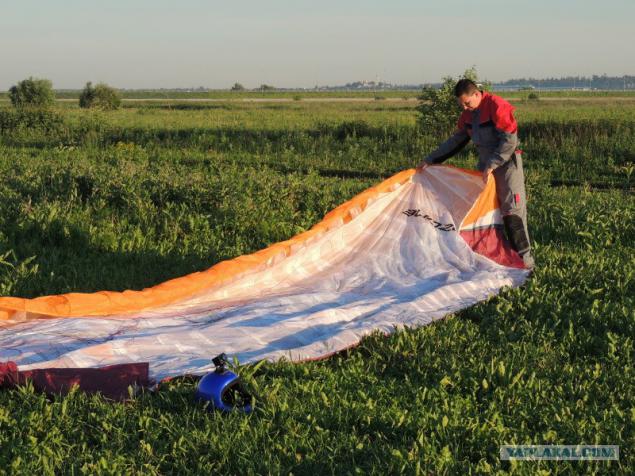
Pulling and straighten lines. The main thing is that the lines of the first series (A-series) were on top, and that there was no laces and loops. Wing tacked to the carabiner on the paramotor. Initially confusion sling scares, but then you get used to everything and takes just seconds.
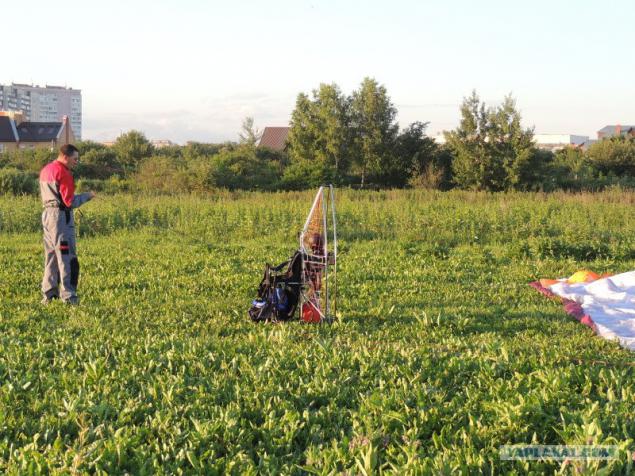
Vstegivaemsya in suspension. Fastens leg straps, chest strap, and a jumper between the straps - "bra", the same happens in the rucksacks. There were several deaths (although the "svobodnikov") due to the fact that the pilots forgot to fasten the leg straps and slip out at the height of the suspension. So I always start with leg loops.
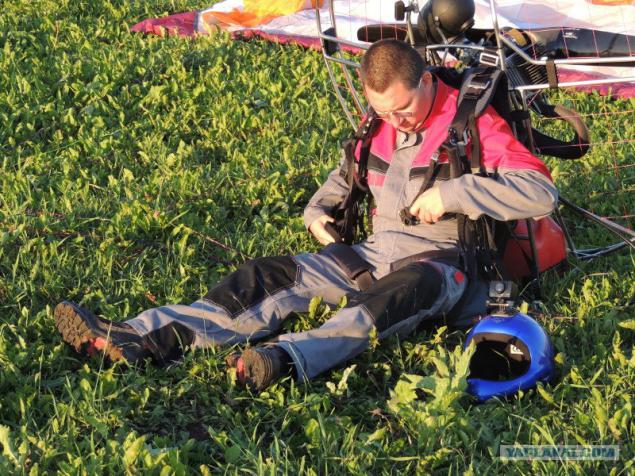
Be sure to wear a helmet. Helmet at me too for the free flight, engine helmet normally open (no beard) and has a good ear protectors. I guess I'll give myself a birthday present.
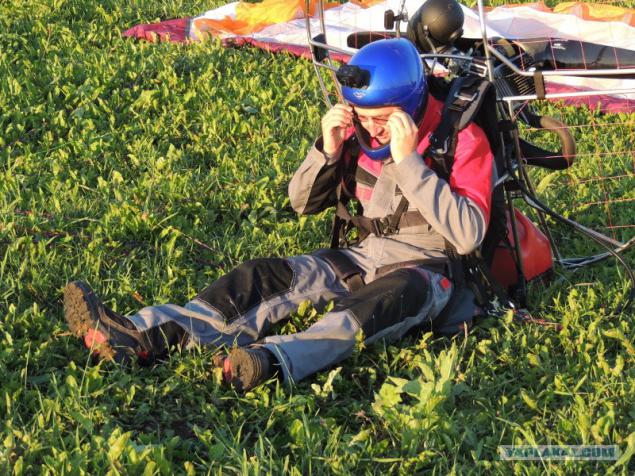
Please Assistant (now my brother) to start the engine. Very start it is possible, but a lot harder. In any case, the flights to drive alone is not worth it - you never know what ...

The engine is warming up, bent to direct a jet of screw up. If you do not, the flow of air crumpled neatly arranged on the ground wing.
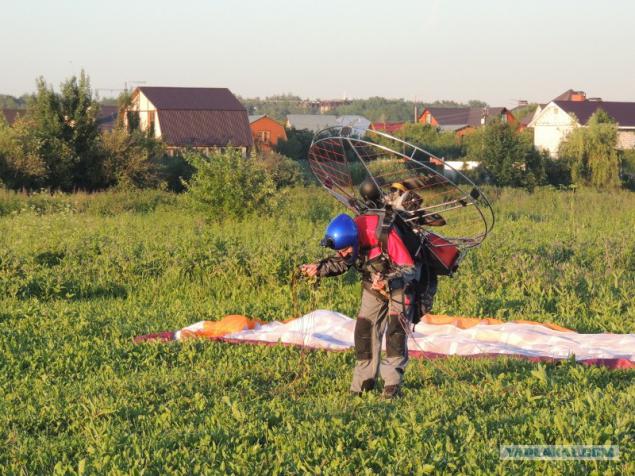
So exciting moment of take-off. Holding the brakes (handles at the ends of control lines) and A-series of lines, give gas and engine thrust pushes forward, causing the arms to pull the wing. Thrust pushes us forward, the wing over your head, the speed increases, there Lifting force ...
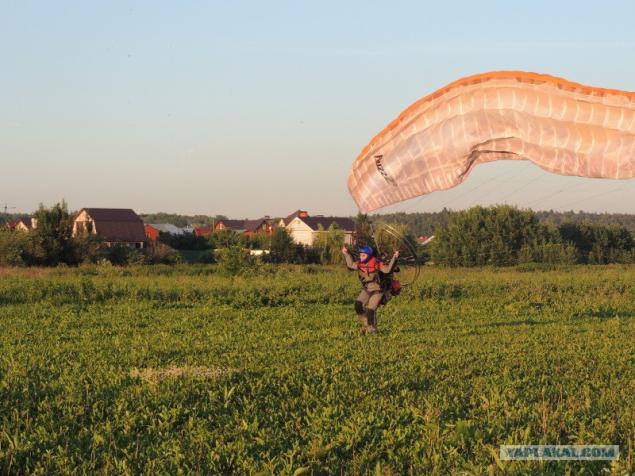
As soon as our take-off speed is reached (about 25 km / h) - the gap! Fly!
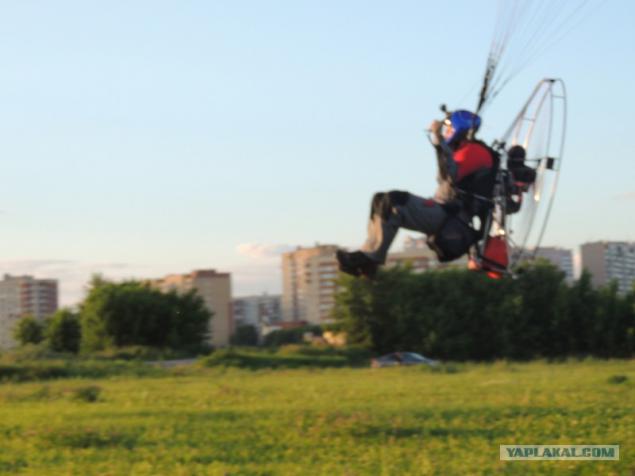
Shrinks tightly in the suspension system, for this we have to throw a hand and help the toggle plank seats to take place in the ass. The flight is in a sitting position, but, by the way, harnesses for free flights more comfortable, because they did not want to get out.

After earning fifty meters high, you can throttle back and look over the neighborhood.

Management glider in flight on the motor by means of the throttle (engine control handle, "gas") and the left and right toggles. By pressing on the gas, respectively, increasing traction and vertical speed. Pull the toggle left, turn left, right - right. Pull (without fanaticism) both brakes, we obtain an analogue of the flaps of the aircraft - the horizontal velocity decreases, the vertical growing.
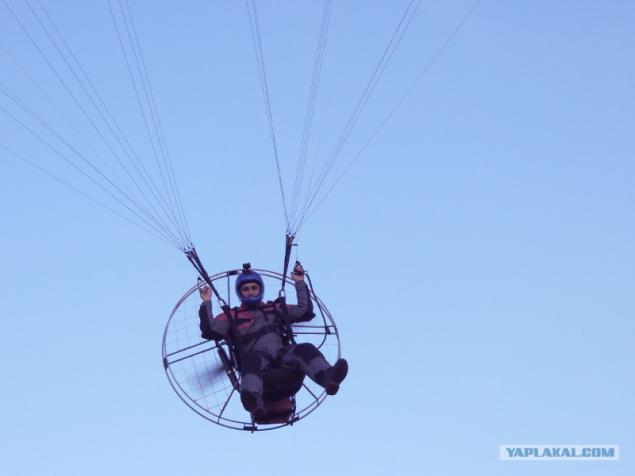
However, a great shot? Incidentally, the horizontal speed of the glider (mine) about 35 km / h, although there's wings, where you can accelerate up to 60-70 km / h. Skoropodemnost 2-2, 5 m / s at full throttle, and the rate of reduction of the engine is at a little more than 1 m / s.
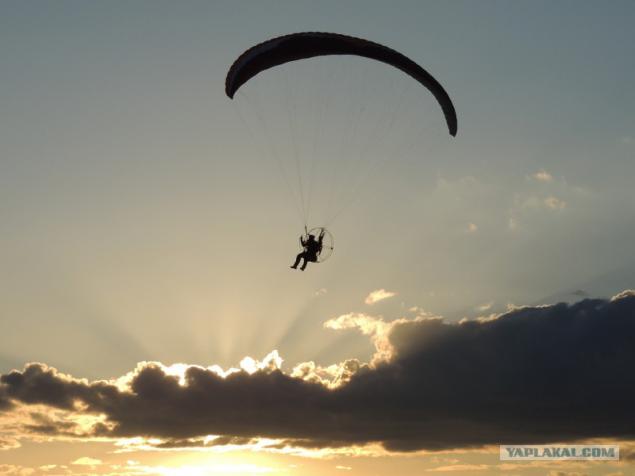
Incident, going to land.

Going into the lane, stops the engine, producing a "chassis" and tighten the brakes. If you just give wings to disperse us, and then it toggles to slow down before the ground, you get the so-called "pillow" and we went out and the vertical and horizontal speed and stand on their feet without a run on the ground.

Unlike aircraft, landing the glider take-off easier.
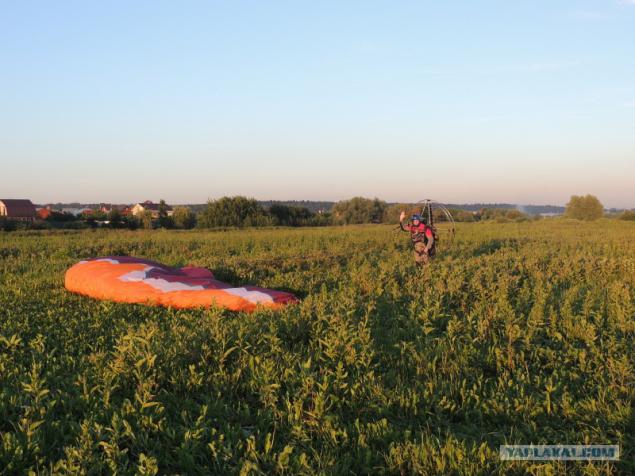
A rest before you start to go home.
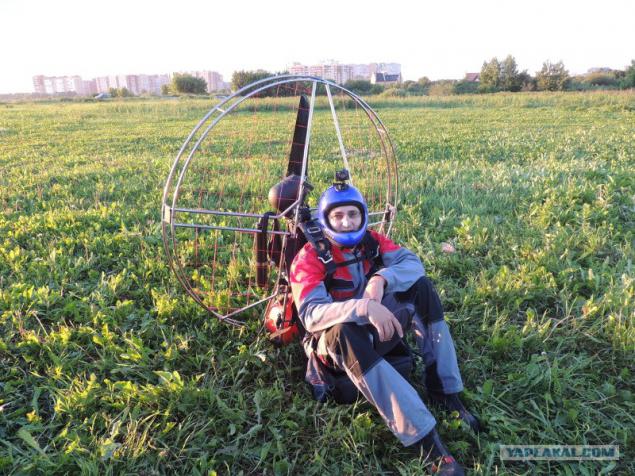
Fold each half of the wing in half, then another half, and so on ... The wing is made of a special fabric density is twice less than the office paper and impregnated to keep out air. Therefore, it requires careful handling.
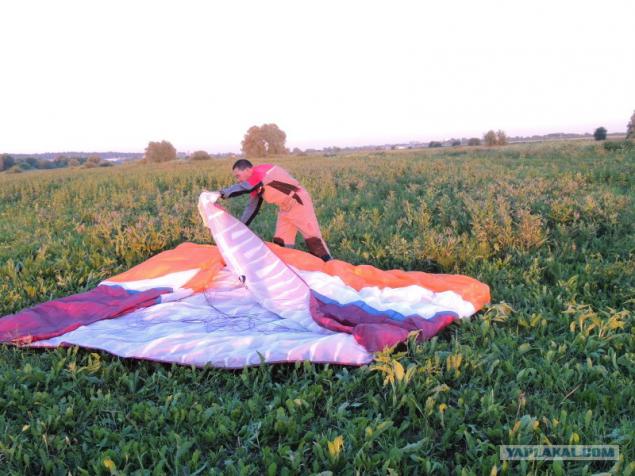
Nice time - squeezing the air out of the wing, lie stretched out on it, and smelling of fabric impregnation.
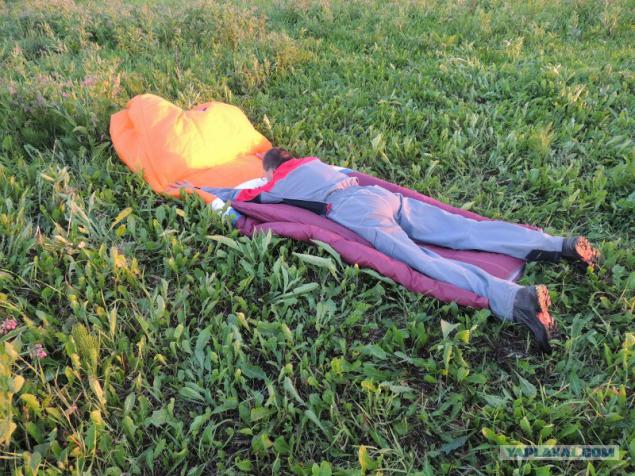
It may be interesting to know to what we are now flying. It is a two-stroke engine Italian Vittorazi Moster-185 of 185 cubic centimeters, with a capacity of 25 hp and weighing only a total of 13, 3 kg. Designed and manufactured specially for the paramotor. This engine - the last squeak in paramotorostroenii - minimalistic and reliable, lightweight and powerful.
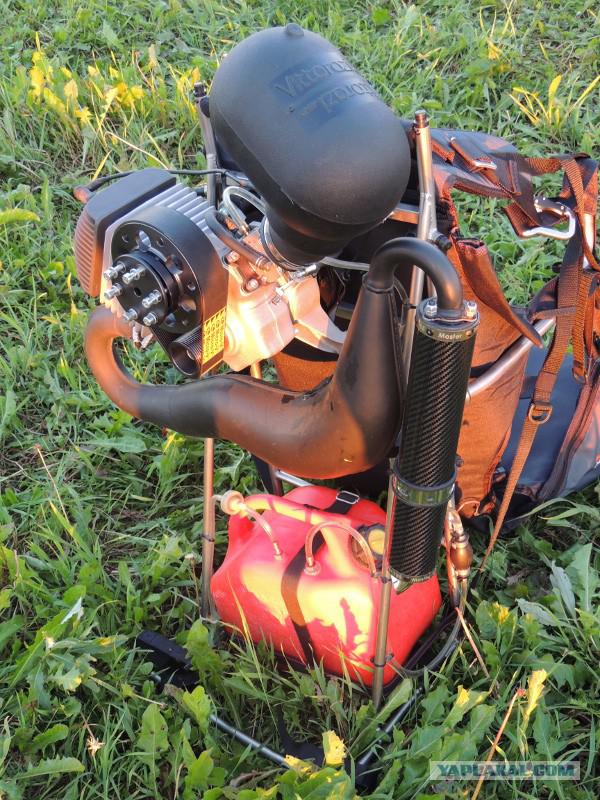
Source:
I do not own an airplane parked somewhere at the airport a few hours away from home. No estates with a helipad. No pilot's license and a certificate from VLEK. I'm just a programmer, the day I write the code in the Moscow office, and the evening meal on the train back home in Moscow.
But I know the secret of flight at any time when the same desire, free time and the weather - even after work. And since my childhood I dreamed of the sky. When I discovered this technique, I went and told everyone talking. Alas, the most important discovery was the fact that the vast majority of my interlocutors not to do not know how or fear, but simply does not want to fly ...
So we take out of the house of our aircraft, cargo and leave the field a mile from my house. The place is very loved flying brothers and close to them in the spirit of model airplanes, but today there is no one but us. That's how it all fits in the trunk. In the photo the great American minivan, but in all it is an ordinary sedan will go.
28 photos

All we need for the flight (except the pilot) - paramotor (correctly "backpack paramotor installation"), the wing (paraglider) and helmet. The bag hides Right guard screws and screw itself.

Putting the fence. Its main purpose - to give soft slings to slip past a rotating propeller at the start. In addition, the fence protects the screw from contact with parts of the paramotor, the pilot's limbs and elements of the landscape.

The enclosure consists of four parts, Tie the "Velcro» Velcro. At first glance this does not seem reliable fixation, but this loop fastener is used even in space.

Tighten the six Allen key bolts of the propeller. This screw is made of carbon fiber and costs 250 euros. Wood screws are half the price, but even the damaged grass and snow. Carbon propeller is much stronger.

The process of mixing and dispensing of fuel (gasoline A-95 and 3%, not cheap two-stroke synthetic oil Motul-710) we do not see, because the tank was filled in again ask the eyeballs. Defined fuel "pear", we start the engine for the "dergalku." There paramotory with electric starter, but for the sake of luxury to be got by pressing their owners have to carry on his back a starter, the battery and the generator, and to deal with their failures. There is also an example of the extreme minimalism - start scrolling screw hand.

Warming up the engine on an average gas. Full throttle can be given, since it is impossible to keep the engine - I slide back across the grass. The manufacturer claims that the maximum thrust - 75 kilograms.

We suppress the engine and the wing stretches. Paragliding my French Ozone Buzz Z3, 32 square meters, the take-off weight of 100 to 135 kilograms for the free (non-motorized) flights. He did not specifically designed for powered flight, but nevertheless I do not want to start a separate wing for the motor.

Pulling and straighten lines. The main thing is that the lines of the first series (A-series) were on top, and that there was no laces and loops. Wing tacked to the carabiner on the paramotor. Initially confusion sling scares, but then you get used to everything and takes just seconds.

Vstegivaemsya in suspension. Fastens leg straps, chest strap, and a jumper between the straps - "bra", the same happens in the rucksacks. There were several deaths (although the "svobodnikov") due to the fact that the pilots forgot to fasten the leg straps and slip out at the height of the suspension. So I always start with leg loops.

Be sure to wear a helmet. Helmet at me too for the free flight, engine helmet normally open (no beard) and has a good ear protectors. I guess I'll give myself a birthday present.

Please Assistant (now my brother) to start the engine. Very start it is possible, but a lot harder. In any case, the flights to drive alone is not worth it - you never know what ...

The engine is warming up, bent to direct a jet of screw up. If you do not, the flow of air crumpled neatly arranged on the ground wing.

So exciting moment of take-off. Holding the brakes (handles at the ends of control lines) and A-series of lines, give gas and engine thrust pushes forward, causing the arms to pull the wing. Thrust pushes us forward, the wing over your head, the speed increases, there Lifting force ...

As soon as our take-off speed is reached (about 25 km / h) - the gap! Fly!

Shrinks tightly in the suspension system, for this we have to throw a hand and help the toggle plank seats to take place in the ass. The flight is in a sitting position, but, by the way, harnesses for free flights more comfortable, because they did not want to get out.

After earning fifty meters high, you can throttle back and look over the neighborhood.

Management glider in flight on the motor by means of the throttle (engine control handle, "gas") and the left and right toggles. By pressing on the gas, respectively, increasing traction and vertical speed. Pull the toggle left, turn left, right - right. Pull (without fanaticism) both brakes, we obtain an analogue of the flaps of the aircraft - the horizontal velocity decreases, the vertical growing.

However, a great shot? Incidentally, the horizontal speed of the glider (mine) about 35 km / h, although there's wings, where you can accelerate up to 60-70 km / h. Skoropodemnost 2-2, 5 m / s at full throttle, and the rate of reduction of the engine is at a little more than 1 m / s.

Incident, going to land.

Going into the lane, stops the engine, producing a "chassis" and tighten the brakes. If you just give wings to disperse us, and then it toggles to slow down before the ground, you get the so-called "pillow" and we went out and the vertical and horizontal speed and stand on their feet without a run on the ground.

Unlike aircraft, landing the glider take-off easier.

A rest before you start to go home.

Fold each half of the wing in half, then another half, and so on ... The wing is made of a special fabric density is twice less than the office paper and impregnated to keep out air. Therefore, it requires careful handling.

Nice time - squeezing the air out of the wing, lie stretched out on it, and smelling of fabric impregnation.

It may be interesting to know to what we are now flying. It is a two-stroke engine Italian Vittorazi Moster-185 of 185 cubic centimeters, with a capacity of 25 hp and weighing only a total of 13, 3 kg. Designed and manufactured specially for the paramotor. This engine - the last squeak in paramotorostroenii - minimalistic and reliable, lightweight and powerful.

Source:
